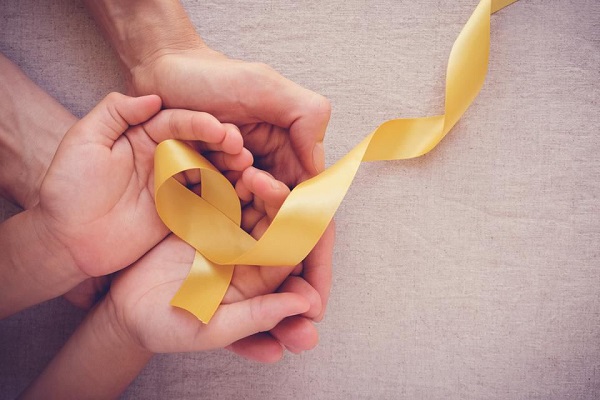Over 1,000 childhood cancers diagnosed in Ghana annually
- Posted on
- Comment

Between 1,000 and 1,400 childhood cancer cases are diagnosed annually in the country, and in most cases, they are presented late, making them difficult and expensive to treat.
This situation has been attributed to the lack of awareness of and knowledge about childhood cancers.
Consequently, a paediatric oncology fellow at the Korle-Bu Teaching Hospital, Dr Ernestina Schandorf, has called for a concerted effort to increase the awareness drive to ensure that parents are able to monitor and look out for the early warning signs to help in treating the cases and keep the cost down.
“Childhood cancers can manifest in any part of the body, and although the causes are largely unknown, certain infections, such as such malaria, hepatitis and HIV, could put children at risk,” she said.
Speaking at an event held by the Paediatric Oncology Unit of Korle Bu to launch the Childhood Cancer Awareness Month, Dr Schandorf said only two to four out of 10 children would survive cancer because of late presentation.
Awareness promotion
September each year is designated World Childhood Cancer Month to generally educate people on and increase awareness of childhood cancers.
In Ghana, the focus this year is to make the public aware that childhood cancers can be cured when detected early.
Awareness, signs
Dr Schandorf said while the causes of adult cancers were mostly known to be environmental and lifestyle habits, the exact causes of childhood cancers were not known.
However, a few environmental factors, such as radiation exposure, had been linked with some types of childhood cancers, she said.
Again, she said signs of cancers were non-specific and could present as any other disease and advised the public to seek early care and not self-medicate.
Dr Schandorf said there were early warning signs that parents should look out for in their children and seek medical help for any prolonged symptoms they might have.
The signs, she indicated, could be white spots in the eyes, which might be eye or brain cancer; lumps in any part of the body, unexplained symptoms, such as children having temperature for two weeks, aching pain which could be bone or blood cancer and neurological symptoms.
She noted that although childhood cancers had been around, awareness of the diseases was now picking up in low and middle-income countries because initially infectious diseases were the most common cases in the sub-Saharan region.
It’s curable
The good thing, the paediatric oncology fellow said, was that childhood cancers were curable when detected early.
“Unlike adult cancers, childhood cancers are very curable, especially when they present very early.
“When detected early, the cost of treatment is also low, compared to when they are detected late when you need more advanced treatment,” she said.
Treatment
Dr Schandorf further explained that the cost of cancer treatment was enormous and the treatment could vary from six months to three years.
She noted that four childhood cancers were covered by the National Health Insurance Scheme (NHIS) and expected an increase in the awareness of the diseases and the survival rate in the country.
The cancers covered by the NHIS are acute lymphoblastic leukaemia, Burkitt lymphoma, retinoblastoma and Wilms tumour.
Paediatric oncology
Giving a database of the opportunity for treatment of childhood cancers, Dr Schandorf said presently there were two comprehensive Paediatric Oncology units in the country at Korle Bu and the Komfo Anokye Teaching Hospital (KATH).
She said between those two facilities, there were six trained paediatric oncologists — four at Korle Bu and two at Komfo Anokye.
Also, there were eight trainee paediatric oncology fellows, three paediatric oncology pharmacists and 18 nurses in paediatric oncology, she added.
Survivor
A childhood cancer survivor, Franklyn Amoako, was 14 when he was diagnosed with osteosarcoma or bone cancer.
His family visited several hospitals and were later referred to Korle Bu.
His was a late detection, and as part of his treatment, he underwent 20 cycles of chemotherapy, as well as surgery to amputate his leg below the knee.
“When they told me I had cancer, I was so shocked; I was devastated. I didn’t know that children could get cancer; I thought it was something that only happened to grown people,” Master Amoako, now 17, said.
-Graphic






 (Selorm) |
(Selorm) |  (Nana Kwesi)
(Nana Kwesi)